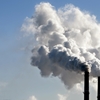
Tyson Foods agreed to a Clean Air Act (CAA) settlement with the U.S. Environmental Protection Agency (EPA) and the U.S. Department of Justice (DOJ) in early April. An investigation into the food company and its affiliates determined that employees were exposed to a combined 1.7 million pounds of anhydrous ammonia at 23 facilities in Iowa, Kansas, Missouri and Nebraska, the EPA reported.
"Exposure to anhydrous ammonia can cause serious health issues, and in extreme cases, even death," said Cynthia Giles, assistant administrator for EPA's Office of Enforcement and Compliance Assurance. "Today's settlement with Tyson Foods will ensure the proper safety practices are in place in the future to protect employees, first responders, and communities located near processing facilities from the threat of dangerous chemical releases."
Several people were injured, property was damaged and one individual died as a result of the toxic gas exposure.
Tyson Foods, the world's largest processor and marketer of chicken, beef and pork, will pay a $3.95 million penalty for exposing workers to the dangerous gas, according to the EPA.
"This settlement will protect workers at Tyson facilities throughout Kansas, Iowa, Missouri, and Nebraska that use anhydrous ammonia, and make the communities surrounding these 23 facilities safer. It will also provide emergency response equipment for first responders to chemical releases," said Ignacia Moreno, assistant attorney general for the Justice Department's Environment and Natural Resources Division. "The requirements of this agreement, which include comprehensive third party audits, will help mitigate the impact of releases of anhydrous ammonia by ensuring compliance with the Risk Management Program under the Clean Air Act."
Tyson also agreed to pay $300,000 for emergency response equipment in order to implement a supplemental environmental project at its facilities. Tyson is also required to conduct third-party audits of its compliance with the CAA's risk management program in all of its affected facilities, said the EPA.
Facility owners and operators are required under the CAA's risk management program to develop and put to work a risk management plan, which is then sent to the EPA for approval.
According to Reuters, inspectors from the Occupational Safety and Health Administration and the EPA found corroded valves, missing sensors and uncalibrated alarms in the company's facilities. The faulty safety equipment is what led to the employees' exposure to the toxic gas.
Dangers of anhydrous ammonia
Anhydrous ammonia is a dangerous and poisonous gas and is considered a hazardous substance. The possible effects of anhydrous ammonia exposure include temporary blindness, eye damage and irritation of the skin, mouth, throat, respiratory tract and mucous membranes. The EPA said if individuals are exposed to high concentrations of the toxic gas vapor for too long, severe lung damage and even death can occur.
According to the U.S. Centers for Disease Control and Prevention, the toxic gas is a clear, colorless gas. It can contaminate indoor and outdoor air, food, water and agriculture.
When employees come into contact with anhydrous ammonia, it is absorbed through inhalation, ingestion and eye and skin contact. Employees and those who work in conditions that contain the possible presence of this toxic gas are advised to wear protective clothing and equipment, said the CDC.
Chemical dangers and explosion hazards exist with the toxic gas. When anhydrous ammonia comes into contact with water, it develops into a poisonous and visible vapor cloud. It can also produce an explosive mixture when it is mixed with gas and/or air, creating the need for an even more cautious approach to exposed areas.
Toxic gas detectors can assist facilities with monitoring anhydrous ammonia levels so that employees are not exposed to dangerous levels of the gas.
Industrial Safety News brought to you by Safety Systems Technology, Inc., leaders in fire and gas detection systems.